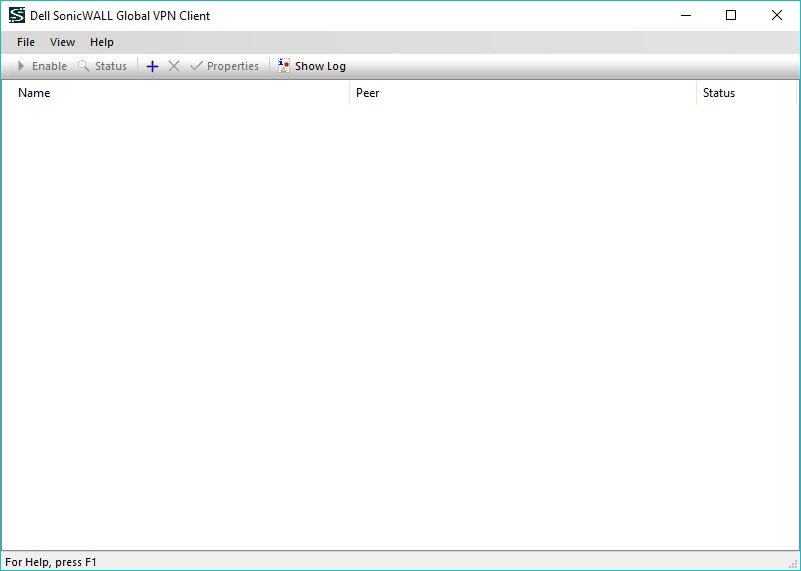

#SONIC WALL GLOBAL VPN DOWNLOAD WINDOWS#
To uncheck the default gateway option, here are the steps to follow if you are a Windows user: This is because if you have configured your VPN connection to use the default gateway on the remote network, then this setting overrides the default gateway settings that you specify in your TCP/IP settings. The default gateway settings should be left unchecked if you are having issues connecting to the internet while your VPN is turned on. It's best to contact your VPN provider, so they can suggest the port that is suitable for your needs. Just like VPN protocols, some ports might also get blocked, causing no internet access when connected to VPN.įinding and switching to the correct port is important. The flow of traffic to and from a VPN server is managed by VPN ports. Then choose the protocols below in the following order of preference: To ensure the best outcome, open your VPN’s options or settings and select Protocol from the list. However, if your VPN uses the UDP protocol by default, it may be blocked in some countries. Incorrect VPN ProtocolĪ routing protocol is a set of rules that determine how your data travels from source to destination VPNs support different types of routing protocols. If you can access the internet after switching the VPN server location, then most likely there was a temporary issue with the server location you selected originally. Generally, VPN providers offer hundreds of different servers, so trying to reconnect to a different one might just get around this problem. Most of this info is available in the Sonicwall Global VPN Client 4.2 Administrator's Guide, but they don't tell you all this detail and examples.If you are connected to a VPN server that is down, blocked (some countries block VPN connections), or has other issues, then it might prevent you from getting connected. I use Altiris Deployment to run that command on my clients, but any installer will do it, such as KBOX, LANDesk, Microsoft System Center, etc. If you're not familiar with the msiexec command, you can run msiexec /? from a command line and get the swithes, or you can google it. I then created my installation command to send to my clients: msiexec /i \\server\share\sonicwall\GVCInstall64.msi /qb This command says to execute the GVCInstall64.msi in that share, and the /qb says quiet and basic interface. By putting that file into the same folder as the GVCInstall64.msi, the installer will grab that file and put into C:\Program Files\SonicWALL\SonicWALL Global VPN Client on your clients for you.Ħ. I put that default.rcf file also into \\server\share\sonicwall folder. Previously I had created a custom default.rcf file that has all the configurations for my clients. I then copied only the GVCInstall64.msi to a network share called \\server\share\sonicwallĥ. Extract the file into an MSI with this command: 184-001457-00_Rev_A_GVCSetup64.exe /c /t:C:\temp\sonicwall This will create files called GVCInstall64.msi and RunMSI.exe in the c:\temp\sonicwall folderĤ.

I put the file into the following directory on my computer: C:\temp\sonicwallģ. The file will be called something like 184-001457-00_Rev_A_GVCSetup64.exeĢ.
#SONIC WALL GLOBAL VPN DOWNLOAD WINDOWS 7#
Have only tested all of the above on Windows 7 64-bit, but I'm sure the 32-bit works the same.ġ. Msiexec /i \\server\share\GVCInstall64.msi /qb /forcerestart Without it the above commands don't restart the client, and the client seems to work fine. I have tried it both with and without adding /forcerestart. Msiexec /i \\server\share\GVCInstall64.msi /qb I have also successfully pushed a job to my client with the source files being on a network share: Automates the installation of Global VPN Client (GVC) 4.2.6.


 0 kommentar(er)
0 kommentar(er)
